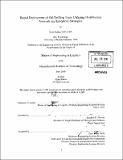| dc.contributor.advisor | Stephen C. Graves. | en_US |
| dc.contributor.author | Rahim, Ryan | en_US |
| dc.contributor.other | Massachusetts Institute of Technology. Engineering Systems Division. | en_US |
| dc.date.accessioned | 2011-02-23T14:26:06Z | |
| dc.date.available | 2011-02-23T14:26:06Z | |
| dc.date.copyright | 2010 | en_US |
| dc.date.issued | 2010 | en_US |
| dc.identifier.uri | http://hdl.handle.net/1721.1/61185 | |
| dc.description | Thesis (M. Eng. in Logistics)--Massachusetts Institute of Technology, Engineering Systems Division, 2010. | en_US |
| dc.description | Cataloged from PDF version of thesis. | en_US |
| dc.description | Includes bibliographical references (p. 73-76). | en_US |
| dc.description.abstract | DTS is an oil and gas services company that delivers drilling tools to six major customer districts in the continental U.S. After the tools are used at a rig, they are transported to the closest repair and maintenance (MTC) facility in either Colorado (CO) or Oklahoma (OK) where they are disassembled and reconditioned for use on a future job. The tools are modular and require custom assembly and programming, depending on the requirements of the well. On occasion, DTS receives urgent orders for drilling tools to replace failed tools or to cater to unexpected demand. These urgent orders are expected to be delivered to customer sites in less than 24 hours from when an order is received. DTS wants to analyze the supply chain impact of consolidating MTC activities to a single facility for operational efficiencies. The rationalization of MTC activities to the CO facility affects DTS's ability to deliver tools within 24 hours due to the longer transportation times to customer districts. How can this longer transportation time be mitigated? Our research shows that using the OK facility as a postponement and distribution hub allows DTS to continue servicing expedited orders within 24 hours and results in a 28% logistics cost savings over a direct shipment method. The postponement strategy entails staging reconditioned inventory at both the OK and CO facility where they can be configured for use within 4 hours of receiving an order. By simulating the movement of inventory around the closed inventory loop, we determined that the total number of tools in the network and the MTC capacity are two important levers of control that affect the availability of reconditioned inventory to service demand. We found that we were able to fulfill a target item fill rate by calculating capital inventory required using an "order up to" inventory policy and setting facility capacity at one standard deviation above average demand. | en_US |
| dc.description.statementofresponsibility | by Ryan Rahim. | en_US |
| dc.format.extent | 76 p. | en_US |
| dc.language.iso | eng | en_US |
| dc.publisher | Massachusetts Institute of Technology | en_US |
| dc.rights | M.I.T. theses are protected by
copyright. They may be viewed from this source for any purpose, but
reproduction or distribution in any format is prohibited without written
permission. See provided URL for inquiries about permission. | en_US |
| dc.rights.uri | http://dspace.mit.edu/handle/1721.1/7582 | en_US |
| dc.subject | Engineering Systems Division. | en_US |
| dc.title | Rapid deployment of oil-drilling tools utilizing distribution network and inventory strategies | en_US |
| dc.type | Thesis | en_US |
| dc.description.degree | M.Eng.in Logistics | en_US |
| dc.contributor.department | Massachusetts Institute of Technology. Engineering Systems Division | |
| dc.identifier.oclc | 700940990 | en_US |
